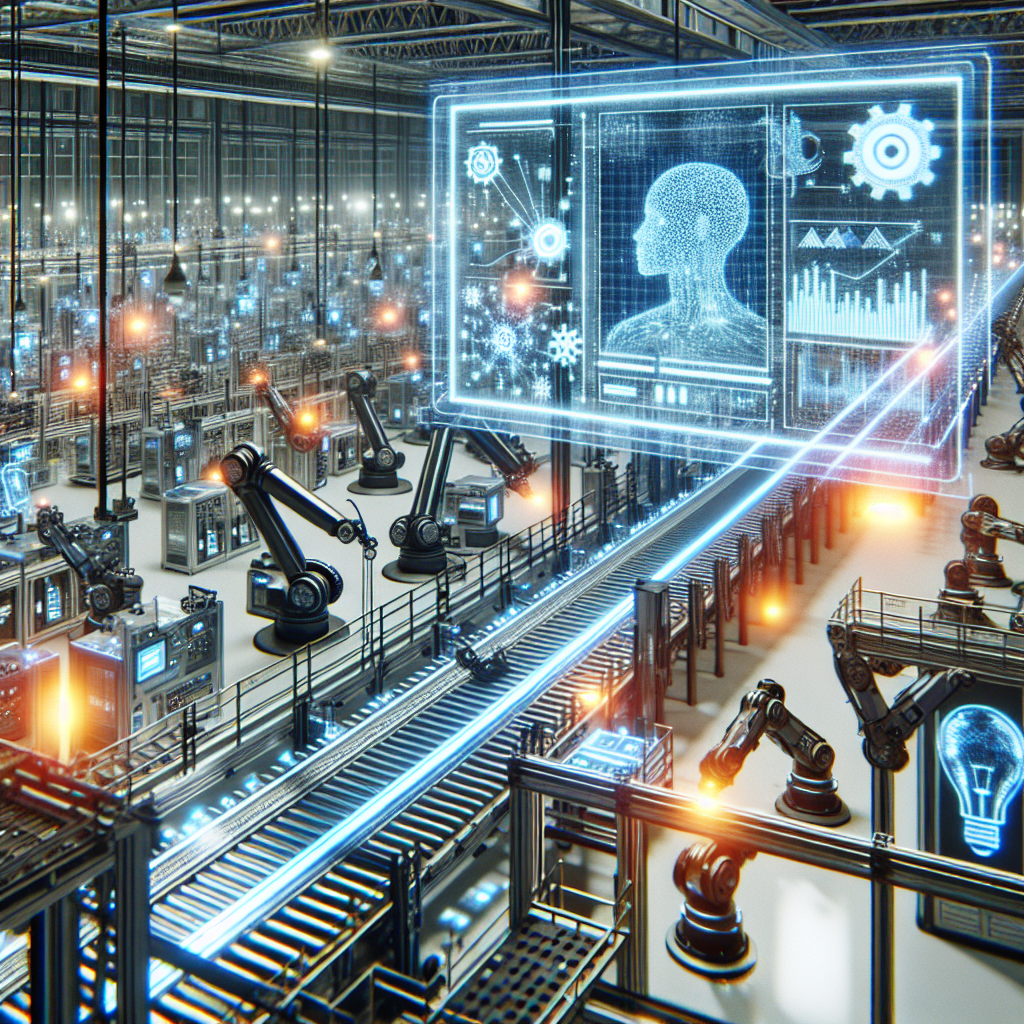The Future of AI-Driven Production Lines in Manufacturing
In recent years, artificial intelligence (AI) has been making its way into various industries, revolutionizing the way things are done. One of the areas where AI is poised to make a significant impact is in manufacturing, particularly on production lines. AI-driven production lines have the potential to streamline processes, increase efficiency, reduce costs, and improve product quality. In this article, we will explore the future of AI-driven production lines in manufacturing and the benefits they can bring to the industry.
What is AI-driven production lines?
AI-driven production lines are manufacturing systems that use artificial intelligence technologies to automate and optimize various processes. These systems leverage AI algorithms, machine learning, and data analytics to make real-time decisions, predict outcomes, and improve overall efficiency. By integrating AI into production lines, manufacturers can achieve higher levels of productivity, quality, and flexibility.
How do AI-driven production lines work?
AI-driven production lines work by collecting and analyzing data from various sources, such as sensors, cameras, and other devices. This data is then used to train AI algorithms to perform specific tasks, such as monitoring machine performance, predicting maintenance needs, optimizing production schedules, and detecting defects in real-time. By continuously learning and adapting, AI-driven production lines can improve their performance over time and make more informed decisions.
What are the benefits of AI-driven production lines?
There are several benefits of implementing AI-driven production lines in manufacturing, including:
1. Increased productivity: AI-driven production lines can automate repetitive tasks, optimize production schedules, and detect inefficiencies to improve overall productivity.
2. Improved quality: AI algorithms can analyze data in real-time to detect defects, predict quality issues, and make adjustments to ensure high-quality products.
3. Cost savings: By reducing waste, improving efficiency, and optimizing resources, AI-driven production lines can help manufacturers save costs and increase profitability.
4. Flexibility: AI-driven production lines can quickly adapt to changing production demands, market trends, and customer requirements, allowing manufacturers to stay competitive in a rapidly evolving industry.
5. Enhanced safety: AI-driven production lines can monitor worker safety, detect potential hazards, and prevent accidents to create a safer working environment.
What are some examples of AI-driven production lines?
There are several examples of AI-driven production lines that are already being used in manufacturing today. Some of these examples include:
1. Predictive maintenance: AI algorithms can analyze data from sensors to predict when machines are likely to fail and schedule maintenance before breakdowns occur.
2. Quality control: AI-driven systems can inspect products in real-time using cameras and sensors to detect defects and ensure consistent quality.
3. Supply chain optimization: AI algorithms can analyze data from suppliers, customers, and internal processes to optimize inventory levels, reduce lead times, and improve logistics.
4. Robot guidance: AI-driven systems can guide robots to perform complex tasks, such as welding, assembly, and material handling, with precision and efficiency.
What is the future of AI-driven production lines in manufacturing?
The future of AI-driven production lines in manufacturing is bright, with many exciting developments on the horizon. As AI technologies continue to advance, we can expect to see even greater levels of automation, optimization, and intelligence in production lines. Some of the key trends shaping the future of AI-driven production lines include:
1. Autonomous production: AI-driven production lines will become increasingly autonomous, with machines and robots making decisions and adjustments on their own to optimize performance.
2. Industry 4.0 integration: AI-driven production lines will be integrated with other technologies, such as the Internet of Things (IoT), cloud computing, and big data, to create smart factories that are interconnected and data-driven.
3. Personalized manufacturing: AI-driven production lines will enable manufacturers to produce customized products at scale, tailored to individual customer preferences and needs.
4. Sustainability: AI-driven production lines will help manufacturers reduce waste, energy consumption, and carbon emissions to create more sustainable and environmentally friendly processes.
5. Collaborative robots: AI-driven production lines will feature collaborative robots that can work alongside human workers, enhancing productivity and safety in manufacturing environments.
FAQs
1. Will AI-driven production lines replace human workers?
While AI-driven production lines can automate many tasks traditionally performed by humans, they are not intended to replace human workers entirely. Instead, AI technologies are meant to augment human capabilities, improve efficiency, and create safer working environments in manufacturing.
2. How can manufacturers implement AI-driven production lines?
Manufacturers can implement AI-driven production lines by first assessing their current processes, identifying areas for improvement, and setting clear goals for incorporating AI technologies. They can then invest in AI software, hardware, and training to integrate AI-driven systems into their production lines.
3. What are the challenges of implementing AI-driven production lines?
Some of the challenges of implementing AI-driven production lines include the high cost of AI technologies, the need for specialized skills and expertise, data privacy and security concerns, and resistance to change from workers. However, with proper planning and investment, these challenges can be overcome to realize the benefits of AI-driven production lines.
4. How can manufacturers ensure the security of AI-driven production lines?
Manufacturers can ensure the security of AI-driven production lines by implementing robust cybersecurity measures, such as encryption, access controls, and monitoring systems. They can also regularly update AI software, conduct security audits, and train employees on best practices for protecting data and systems.
In conclusion, the future of AI-driven production lines in manufacturing is promising, with the potential to transform the industry and create new opportunities for growth and innovation. By embracing AI technologies, manufacturers can improve productivity, quality, flexibility, and sustainability in their production processes, leading to a more efficient and competitive manufacturing sector. As AI continues to evolve and mature, we can expect to see even greater advancements in AI-driven production lines that will revolutionize the way things are made.

